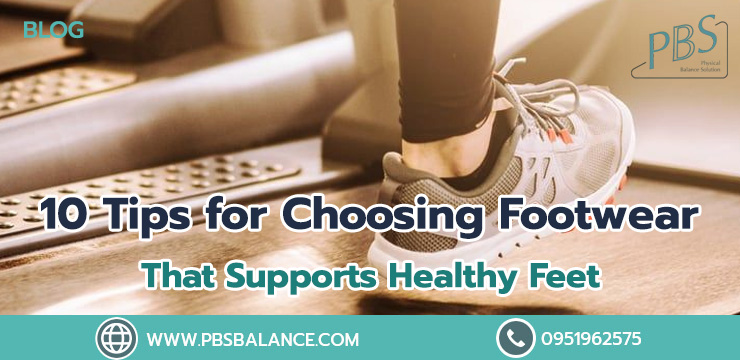
Before choosing shoes for foot health, it’s important to understand your foot type. You can determine this with a Wet Test:
- Place a sheet of paper on the floor.
- Slightly moisten the soles of your feet and walk across the paper.
- Observe the imprint left behind.
- Identify whether you have high arches, normal arches, or flat feet.
It’s best to measure your foot size in the evening or after work, when your feet are at their largest. This helps ensure that your health-focused shoes will remain comfortable throughout the day—not just in the morning.
Once you know your arch type, use the following tips to select shoes that best support your feet:
1. Choose Low Heels
High heels increase pressure on the forefoot and toe joints. If you cannot avoid wearing heels, select shoes with a heel height of no more than 5 centimeters.
2. Shoes That Support Your Arch Type
Choose footwear that corresponds to your specific arch structure and natural foot contour.
- For flat feet: select shoes that offer structured support for the midfoot.
- For high arches: choose cushioned shoes that absorb impact.
The shoes should also follow the general shape of your foot and fit comfortably.
3. Balance of Comfort and Stability
Select upper shoes that are soft and comfortable, yet firm enough to provide proper structural support.
4. Rocker soles
Shoes should bend slightly at the forefoot, not in the middle. This promotes natural foot movement without compromising support.
5. Toe Box with Adequate Depth
The toe area should be deep enough about 1.3 centimeters of space between your longest toe and the end of the shoe to accommodate your toes without pressure, especially for those with hammertoes or other foot conditions, to allow natural toe movement and prevent crowding
6. Toe Box with Ample Width
The front of the shoe should be wide enough to let your toes spread naturally and avoid compression, which can lead to foot pain or deformities.
7. Arch Support Insoles (if Needed)
If your shoes do not come with arch support, you can insert orthotic insoles that suit your needs. Ensure that the insole fits properly within the shoe and does not cause crowding or slippage. For flat feet, use specially designed flat-foot support insoles.
8. Supportive and Protective Outsole
The outsole should provide enough flexibility and/or firmness to maintain joint alignment and ensure walking comfort.
9. Breathable Materials
Avoid plastic or vinyl shoes, which trap heat and moisture. Choose breathable materials that promote airflow to reduce the risk of odor and fungal infections.
10. Footwear Appropriate for Your Activity
Choose shoes specifically designed for your primary activity to ensure optimal support and injury prevention:
- Walking shoes should provide adequate heel cushioning to absorb impact and a flexible forefoot to support natural gait mechanics.
- Running shoes should offer enhanced heel stability and greater flexibility in the forefoot to accommodate forward propulsion and repetitive high-impact motion.
Additional Tip
When shopping for health-focused footwear, always try the shoes on while standing or walking to check for overall comfort. Do not rely solely on your shoe size, as foot shape and dimensions may change over time. For tailored advice, consult with a specialist.
Sources
- https://uhs.umich.edu/shoes
- https://www.solescience.ca/footwear-education/
- https://www.uofmhealth.org/health-library/tn7285
- https://www.footcaremd.org/resources/how-to-help/10-points-of-proper-shoe-fit
Facebook: PBSofficial.TH
Line Official: @pbs.official